Taking a Trek Around the State Without Leaving Your Own Neighborhood – The Sierra College Arboretum
Shawna Martinez
Biology Professor, Sierra College
 Established for educational purposes in the late 1960s, the western section of the Sierra College Arboretum, located today near the southwest corner of Sewell Hall, was planted to provide a living collection of native plants found throughout California, providing visitors with a chance to see species they might not encounter in their day-to-day lives. The Arboretum was designed in such as way as to highlight the ecological relationships between plant species, so that one could visit the site and encounter ecosystems such as a yellow pine forest or a redwood forest and many others as you walk through the site.
Established for educational purposes in the late 1960s, the western section of the Sierra College Arboretum, located today near the southwest corner of Sewell Hall, was planted to provide a living collection of native plants found throughout California, providing visitors with a chance to see species they might not encounter in their day-to-day lives. The Arboretum was designed in such as way as to highlight the ecological relationships between plant species, so that one could visit the site and encounter ecosystems such as a yellow pine forest or a redwood forest and many others as you walk through the site.
A few years after the West Arboretum site was established, the East Arboretum was planted on campus between the greenhouses and the swim complex/tennis courts. The East Arboretum includes some native species, but was planted primarily to display a collection of horticultural varieties from around the world. Within the last few years, additional gymnosperm specimens from outside California have also been planted in the lawn area south of Sewell Hall. Today the primary purpose of the Arboretum remains the same as it was during its original inception, which is to exhibit native plant species (trees, shrubs, vines and herbaceous forms) in a setting that allows their natural growth habit to be observed and appreciated.
The development of the Arboretum began as a Science Club project
 The Arboretum began as a project of the campus Science Club and the Biological Sciences Department in 1968 under the direction of then botany professor Roland Bergthold and featured donations from Larry Hyder of Placerville. Ted Kitada, Supervisor of Grounds at Sierra College at the time, helped with the ground work, planting and provided advice on the care or the various species planted at the site. Over the years, trees and shrubs have been added to the arboretum using both purchased and donated plants. Everett Butts, Wapumne Nursery, has donated many different species, which have added much to the variety that we have now. Many others including the staff at Sierra College (including Jim Wilson, Shawna Martinez, Harriet Wilson, Sherry Reese, Mark Laws and others) have donated plants and their time.
The Arboretum began as a project of the campus Science Club and the Biological Sciences Department in 1968 under the direction of then botany professor Roland Bergthold and featured donations from Larry Hyder of Placerville. Ted Kitada, Supervisor of Grounds at Sierra College at the time, helped with the ground work, planting and provided advice on the care or the various species planted at the site. Over the years, trees and shrubs have been added to the arboretum using both purchased and donated plants. Everett Butts, Wapumne Nursery, has donated many different species, which have added much to the variety that we have now. Many others including the staff at Sierra College (including Jim Wilson, Shawna Martinez, Harriet Wilson, Sherry Reese, Mark Laws and others) have donated plants and their time.
The Arboretum includes a cactus and a rock garden
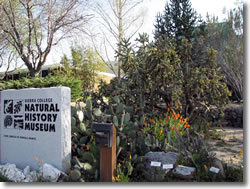 After the creation of the original arboretum site the Cactus Garden was planted adjacent to the West Arboretum and extends along the western side of the science building. This exhibit includes various types of cactus and other plants native to the desert regions of California and nearby states. Many of the plants in the exhibit were donations from the Sacramento Cactus Society and came from the cactus gardens of the Sacramento Zoo. An additional feature of this exhibit is a collection of geological specimens. Visitors will find that between the plants there are numerous labeled rock samples typical of desert habitats, as well as, other geological samples, some of which date back billions of years!
After the creation of the original arboretum site the Cactus Garden was planted adjacent to the West Arboretum and extends along the western side of the science building. This exhibit includes various types of cactus and other plants native to the desert regions of California and nearby states. Many of the plants in the exhibit were donations from the Sacramento Cactus Society and came from the cactus gardens of the Sacramento Zoo. An additional feature of this exhibit is a collection of geological specimens. Visitors will find that between the plants there are numerous labeled rock samples typical of desert habitats, as well as, other geological samples, some of which date back billions of years!
The primary focus of the arboretum has been to establish a variety of trees and bushes on the site. As these have become more mature, work has begun on adding to the diversity of the microhabitats within the arboretum. Plans for walkways, benches, stream construction, decorative fences and flower projects are examples of future projects for the arboretum, depending on time and funding. A recent addition of a new watering system will allow the Arboretum to expand its offerings even further.
The Arboretum allows visitors to experience a range of California habitats
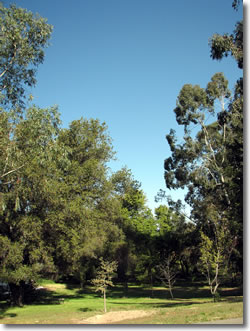 It is the goal of the volunteers working with the Arboretum to expand and develop an aesthetically pleasing atmosphere within the arboreta while maintaining the existing botanical landscape that has matured over the years. While walking through the Arboretum one can experience what it would be like to stroll through a variety of native California habitats - the Central Valley, the Coast, the Sierra, in your own backyard. One can explore the rich variety of plants from many lands that we use for enriching our homes and towns. The arboreta can teach you about the ecology and natural history of many plants, some of which are very drought-tolerant yet beautiful and graceful. The plant varieties currently found in the Arboretum provide an excellent opportunity for observation and study and provide us with a greater understanding of the role of those plants in nature.
It is the goal of the volunteers working with the Arboretum to expand and develop an aesthetically pleasing atmosphere within the arboreta while maintaining the existing botanical landscape that has matured over the years. While walking through the Arboretum one can experience what it would be like to stroll through a variety of native California habitats - the Central Valley, the Coast, the Sierra, in your own backyard. One can explore the rich variety of plants from many lands that we use for enriching our homes and towns. The arboreta can teach you about the ecology and natural history of many plants, some of which are very drought-tolerant yet beautiful and graceful. The plant varieties currently found in the Arboretum provide an excellent opportunity for observation and study and provide us with a greater understanding of the role of those plants in nature.
Visitors to the Arboretum can observe a variety of plant and geological specimens within easy walking distance of parking. Tables located in and near the arboreta provide a pleasant place to study or to have lunch. Sewell Hall, located nearby includes an outstanding Natural History Museum with multiple exhibits and displays. Also nearby is the western entrance to the Sierra College Nature Area, an oak woodland/riparian forest maintained in its natural state. Here visitors can see plants, fish, reptiles, birds and other wildlife common to the foothill woodlands.
The Arboretum is maintained by volunteer effort and donations
The Sierra College Biological Sciences Department and the Environmental Horticultural Department, working side by side with the Natural History Museum, invites you to join in our efforts to expand and develop your arboreta into a thriving, aesthetic, and knowledge-promoting garden. Please get involved by making a tax-deductible donation to help us complete the many planned improvements. This dream could be a reality with your help. Please donate what you can to: "Sierra College Foundation, Account # 288", The Arboretum Fund”.
Or instead of donating money, we also could use your help working in the arboretum as a volunteer a few days each month. Over the years the arboretum has grown and changed, thanks in large part to the volunteer efforts of community members, students, staff and faculty. You could help with mulching projects to prevent weeds and water loss throughout the grounds or perhaps you would like to sponsor or care for a specialized garden areas such as a butterfly garden or lily meadow or serpentine barren or an alpine rock garden. Your volunteer assistance would be greatly appreciated.
Come by and talk to us about the plans for the future of our arboretums. If you would like, we would be glad to personally introduce you to the arboreta and its many plant specimens. We will be glad to talk with you or answer any questions you might have. You are invited to picnic, view the plants, or just to seek a moment of peace among the trees.
If you wish to learn more about the arboreta, or would like to learn about volunteer opportunities please contact Shawna Martinez at 916-660-7918 or via email at smartinez@sierracollege.edu.
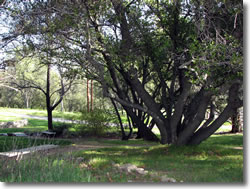 |
 |
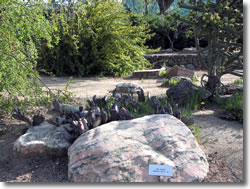 |
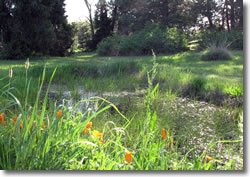 |
